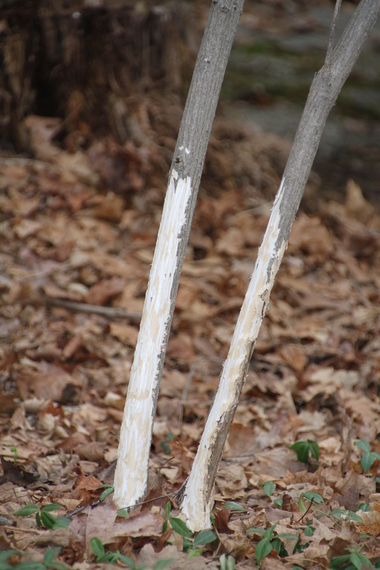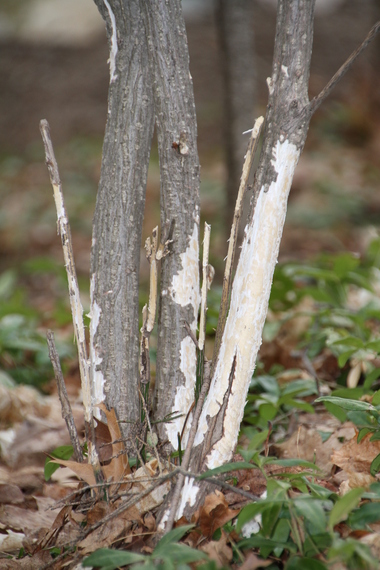When my wife and I lived in the forests of the Congo several years ago, we had a friend and neighbor named Kauteli. He liked or was indifferent to animals that did not threaten his family, damage his crops, or eat his seeds. But he did all in his power to keep at a distance those that menaced his family's safety, food security, or livelihood.
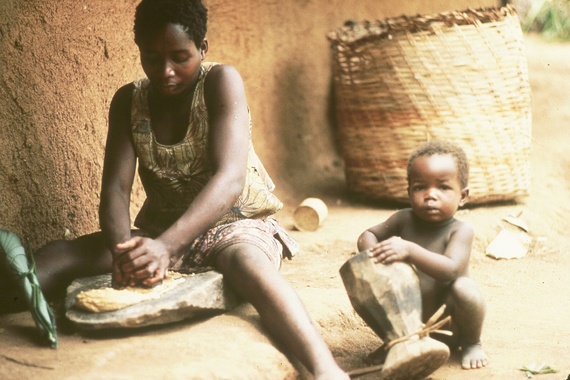
Kauteli's wife grinding delicious and nutritious peanut butter. Gambian giant rats and baboons can easily destroy precious seed stores. Photo © Dr. Edward Tronick.
That Kauteli would rather not live with some wildlife put him in conflict with the conservation community, who like me (a European-educated biological research scientist) typically advocate for protecting all of nature's parts and the ecological roles each and every species plays. Though saving all of nature is, I would argue, a good thing for humanity and the planet, it is a viewpoint that can at times be myopic to the needs and interests of those who must live with wild nature.
Kauteli is not alone. We all have "designer" arks, as I like to call them -- a list of the species that, like Noah, we would make room for on the survival vessel of our imagination. Which species make it and which do not depends a lot of where you are sitting. Boston, Massachusetts, is a far cry from the Congo and each July my mind strays toward thoughts of Kauteli for perspective as our garden begins to look like a battlefield, with each tender perennial surrounded by a wire palisade to fend off the attacking rabbits.
Let me explain. Last spring I'd noticed white scars on many of our shrubs and saplings. At first I thought it was frost damage, then a trick of the light. Finally I realized that during this strange winter of snows and thaws something had gnawed the bark from most of the maple saplings, many of our rose bushes, and the two shad-bush that each year we try so vigilantly to protect from the spring time appetites of abseiling winter-moth caterpillars.
Looking into our neighbors' backyards I counted many other trees girdled by sharp teeth to about a foot off the ground. I wondered if our maples, roses and shad bush would recover. Would my neighbor's little apple and pear orchard survive? Would this kill all the winged-euonymus bushes in the neighborhood? They are exotics, so I guess I shouldn't care.
The culprit was clear -- rabbits, lots of them. Their pellets were everywhere and the telltale front incisor scars on the damaged trees were all the evidence I needed. So should I set a Havahart trap to arrest them? Spraying pepper-infused critter-ridder was a tad too late and typically never works with hungry bunnies. As I walked around, my mind dwelt briefly on other more lethal solutions for these pesky wabbits. Then I saw them, next to a neighbor's garage, on a brush-pile -- three rabbits with what appeared smug looks on their faces.
The debate spilled over into a talk with my wife over dinner about how we view the species that live in or use our garden. Photo © David Wilkie.
I realized that I did not want (and frankly am not allowed by the city) to kill them. And if I trapped and released them I was just displacing the problem to someone else. But I wanted to do something because, darn it, they were eating in my garden and damaging my ornamental plants. Could I just tolerate the rabbits? We live happily with the coyotes that moved into the area about five years ago but maybe that is because our cats are kept indoors -- not so much for their protection but for the birds'.
This internal debate spilled over into a talk with my wife over dinner about how we view the species that live in or use our garden. Songbirds -- good. Raptors -- even better (they might eat the rabbits). Shrews -- good. Opossum -- okay. Voles -- not so good. Rabbits -- NO! Wild turkeys -- Okay. Coyotes -- agnostic. Deer -- bad. Raccoon -- fun.
Generally speaking, those that are pretty to look at or have interesting behavior to watch and (most importantly) do not damage the plants are good. All others are bad. My wife's and my designer ark is filled with those wildlife species we like in our garden. Preferably it is empty of those that increase the cost of replacing ornamental shrubs or cause the loss of gorgeous displays of summer flowers when the annuals are chewed down to nubs.
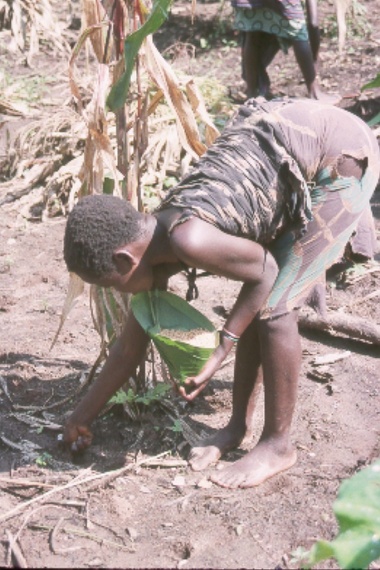
When these maize seeds sprout, Kauteli and his family will need to sleep in the fields to protect the tender seedlings from flocks of Quelea, cane rats, and troops of mangabeys. Photo © David Wilkie.
By contrast, Kauteli's ark is a much more serious affair. It is about having enough food for the year, seeds to plant for the future, and livestock to tend as a living, growing bank account.
Yes our city, state, and federal regulations limit which wildlife species we can remove and don't typically provide compensation for the cost of the damage protected wildlife may cause. But let's face it: we are talking about pretty gardens. This is not life and death stuff.
To expect or at times even require that Kauteli protect globally threatened wildlife that he would otherwise exclude from his ark places him and his family at risk of running out of food or losing the wealth he has saved in his precious chickens and goats. At a minimum, if we ask Kauteli to open his ark to protect species that we the global community value, we need to fully compensate any and all loses that he may incur.
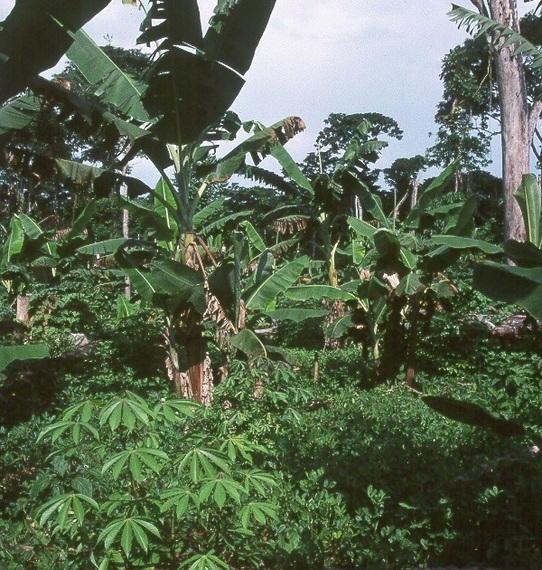
Kauteli's field of plantains, cassava and peanuts -- a living supermarket for elephant, bushpigs and baboon. Photo © David Wilkie.
I can live with rabbits in my garden, even if I don't like them. Let's do all we can to help Kauteli and families like his, whose homes are in or around national parks and protected areas, to live with wildlife that he would likewise prefer to live without.

